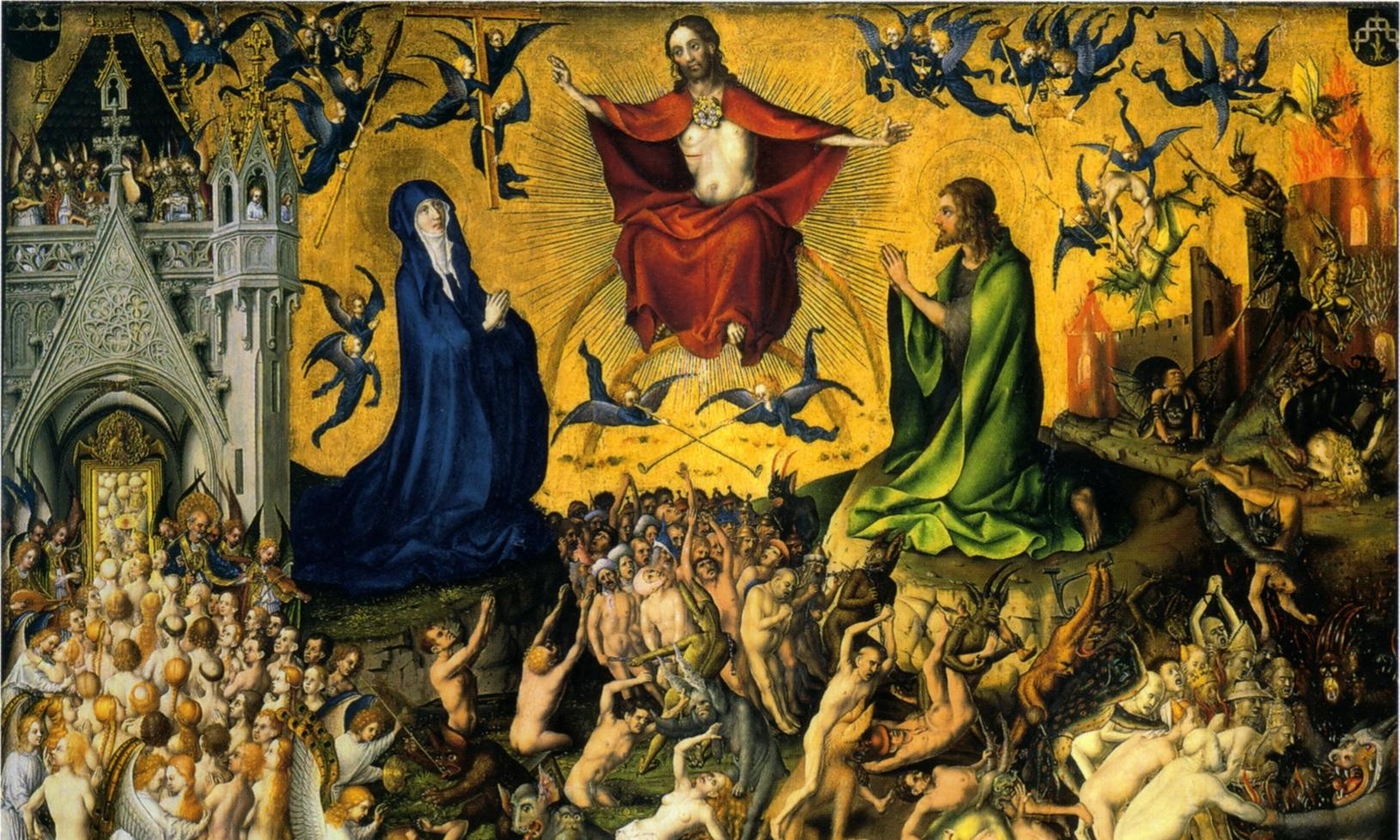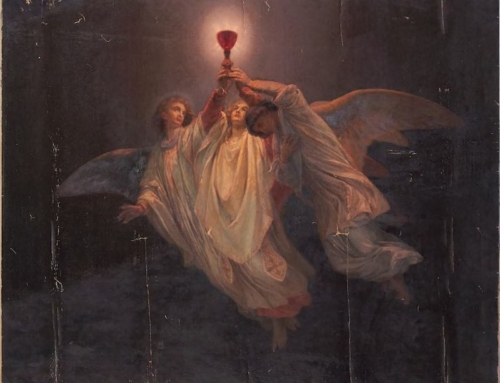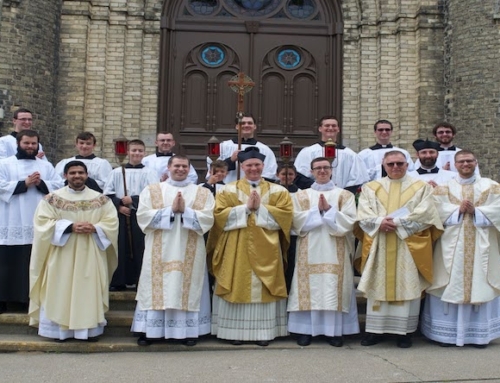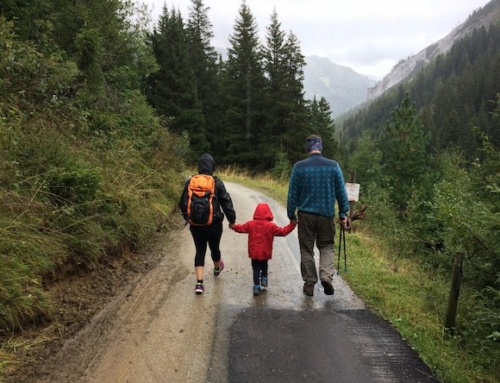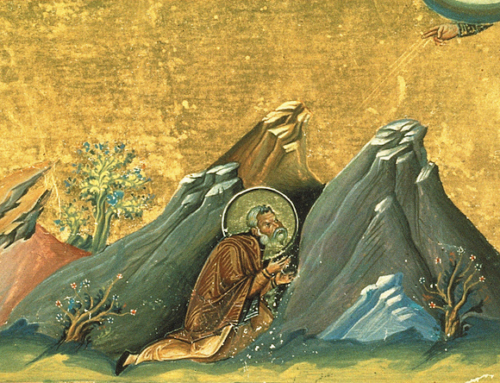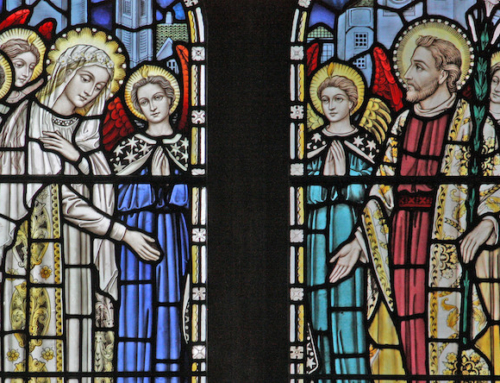In this first part of Advent, the liturgy makes our place in time clear. The preface at mass every day of Advent until December 17th recalls this time of waiting. The priest prays, “that…we who watch for that day may inherit the great promise in which now we dare to hope.” This inheritance follows Christ’s Ascension into heaven where he sits at the right hand of the Father. Although Ascension Thursday is on the other side of the liturgical year, it is this mystery which points to the second coming. After all, Luke recounts that the angels said to the apostles after his Ascension, “Men of Galilee, why are you standing there looking at the sky? This Jesus who has been taken up from you into heaven will return in the same way as you have seen him going into heaven”(Acts 1:11). However, Christ’s Advent on the last day not only follows his Ascension chronologically, but Christ’s bodily Ascension both causes the bodily ascension of the resurrected saints on the last day and brings men grace in this life. There are two ways Jesus’s Ascension into heaven prepares us for his Advent.
First, Jesus is the cause of our ascension by preparing the way for us (ST III Q. 57, a. 6). Just as through his grace as our Head he causes the resurrection of our bodies, so too he tells us, “I go to prepare a place for you” (John 14:21), and Paul says, “He ascended on high and took prisoners captive” (Eph 4:8). We are the prisoners he is leading out of sin and death into life. Jesus in his act of ascending is leading us to the Father. Thus when he said, “It is better for you if I go” (John 16:7), it is truly better because by his Ascension, he takes us to an entirely new life. Mary’s journey to heaven powerfully illustrates this mystery. Although we do not refer to Mary’s ascent to heaven as an ascension but as the Assumption, we do say that Jesus’s Ascension caused Mary’s ascent into heaven because he configured her to himself through grace. She received the gift of her assumption early because of her particular role as Mother of God. So too for all of us who have been configured to Jesus’s Passion and Resurrection in baptism and have the indwelling of the Holy Spirit, can hope for the resurrection of our bodies at Christ’s Advent.
Second, Jesus is the cause of our bodily resurrection because he is at the right hand of the Father (ST III Q. 57, a. 6). The letter to the Hebrews says, “[Jesus] is always able to save those who approach God through him, since he lives forever to make intercession for them” (Heb 7:25). So when we pray to Christ, we pray to a real person, true God and true man, enthroned in the highest heaven. We may memorialize different events in his earthly life like his birth, miracles or even his Death which merited our salvation. However, Jesus no longer lays in the manger, or hangs on the Cross. Rather, “[Jesus] ascended far above the heavens that he might fill all things”(Eph 4:10). That is, that he might fill all things with his grace. This grace is dispensed to all the just on earth; it is a grace that leads both to a new life with him and, ultimately, draws us into the next life. In the case of Christ’s priesthood, it is important not to think of the sacrifice only as his being slain on the cross. In the Old Law, the slaying would take place outside the sanctuary, then the priest would offer the sacrifice to God inside on the altar. So too Christ was slain on Earth but now as our priest in heaven makes intercession for us before the Father. This intercession brings us grace, saving us here on earth in order that he might draw us up with him at his Advent.
Jesus’s Advent on the last day is therefore deeply connected to his Ascension. He both causes our bodily resurrection into heaven at his Advent and prays for us now at the right hand of the Father. Therefore, as we await his return to earth let us consider the wonderful things he has done for us: that he saved us and through grace continues to bring about our salvation. We hope that when our Savior returns again, we are found worthy to be drawn by him to the new heaven and the new earth.
✠
Image: Stefan Lochner, Last Judgment

